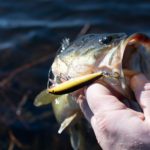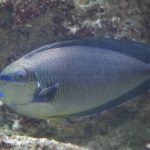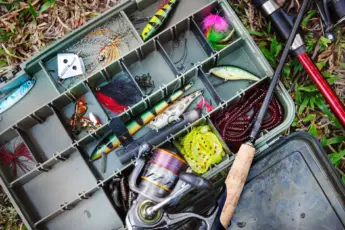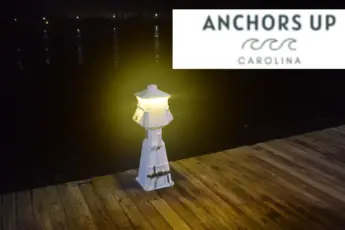Anglers search for tarpon along the Georgia coast for the unmatched battle. Charter captains and recreational fishermen encounter tarpon in coastal Georgia during the summer and fall months. Still, they need to come prepared with stout gear for any shot at landing these beasts. These giants present a challenge to even the most experienced anglers. Just what is a tarpon that can be found in coastal Georgia.
How To Identify A Tarpon
When it comes to identifying a tarpon is not a difficult task. The scales of the fish are massive in size. The back is green in color, but the sides are pure silver. The pure silver color is why they are referred to as a silver king. Tarpon have a forked tail and jaw that is shaped like a scoop. Look for a trailing piece of fin attached to the dorsal.
Have your muscles ready, tarpon range from a foot in size up to two hundred plus pounds. The mesmerizing jumps will leave you astonished.
What Is The Range Of A Tarpon Fish
The silver king extends well along the east coast of the United States. The numbers are sparse in New England but are most prevalent in Florida and thinning up to Long Island.
The highest population of these fish is south of Virginia. Keep in mind that the silver king is seasonal in Georgia, including tarpon fishing Savannah GA near the northern end of the coast. These fish will move with warm water, so expect to find them in the summer months along the entire Georgia coast.
What Do Tarpon Eat
Tarpon are aggressive eaters who primarily dine on various types of fish. When a silver king eats its prey, you will likely hear a popping noise across the water. The popping noise results from them devouring fish such as sardines, pinfish, or mullet whole from the surface of the water.
Hungry silver kings will also dine on dead fish as well. Take a look in the water around fish cleaning stations. These fish often cruise around looking for fish carcass scraps.
In What Type Of Habitat Do Tarpon Fish Live
Finding silver kings is highly dependent upon the region in which you are fishing. For the most part, with the exception of South Florida, silver king are seasonal and only make an appearance through the summer and fall. When they are present, look for silver kings around channels, inlets, river mouths, and shallow flats.
Keep in mind that when tarpon fishing Georgia, they will more often than not be found along the beaches but also venture into bays.
How Do You Catch Tarpon
Both fly fisherman and conventional fisherman have equal opportunity to hook and land tarpon fish. Silver king fishing requires heavy action rods and reels with thirty to fifty-pound line.
Sight fishing is one of the most popular ways to catch silver king. Look for these fish breaking the surface, which is called rolling. When silver kings are spotted, cast a live pinfish, crab, mullet, or menhaden in its vicinity.
The game qualities of these are unlike any other fish. Have a friend or family member ready with a camera to capture the leaps as they try to shake the hook free.
Are Tarpon Good To Eat
Can you eat tarpon? The answer is no. Silver kings are incredibly bony and have a strong fish smell to them. The game qualities are unmatched, and that should be enough. If you catch one, release it because it will spoil your great memory of the fight. Pass that word the fish should be targeted for the exciting fight because the answer is no to are tarpon fish good to eat.
Can You Keep Tarpon In Georgia
Yes, you can you keep one tarpon with a total length of 68″ when Georgia tarpon fishing. It is best to take a few good photos and let the fish go to fight another day because silver king fillets are not good table fare.
Even better is measuring the fish and having a replica mount made as a lasting memory of your catch.
Pack Up And Head Out Tarpon Fishing
Make sure you bulk up the muscles before heading silver king fishing in coastal Georgia. Bring along a cast net or visit a local bait shop near me and load up on live baitfish. Be prepared for a long fight that can drag on for an hour, depending on the fish’s size. Hold the fish cautiously by supporting the fish’s entire length and not attempting to lift it by the mouth. Remember to obtain a fishing license if you’re not boarding a charter boat.








Leave a Comment
You must be logged in to post a comment.